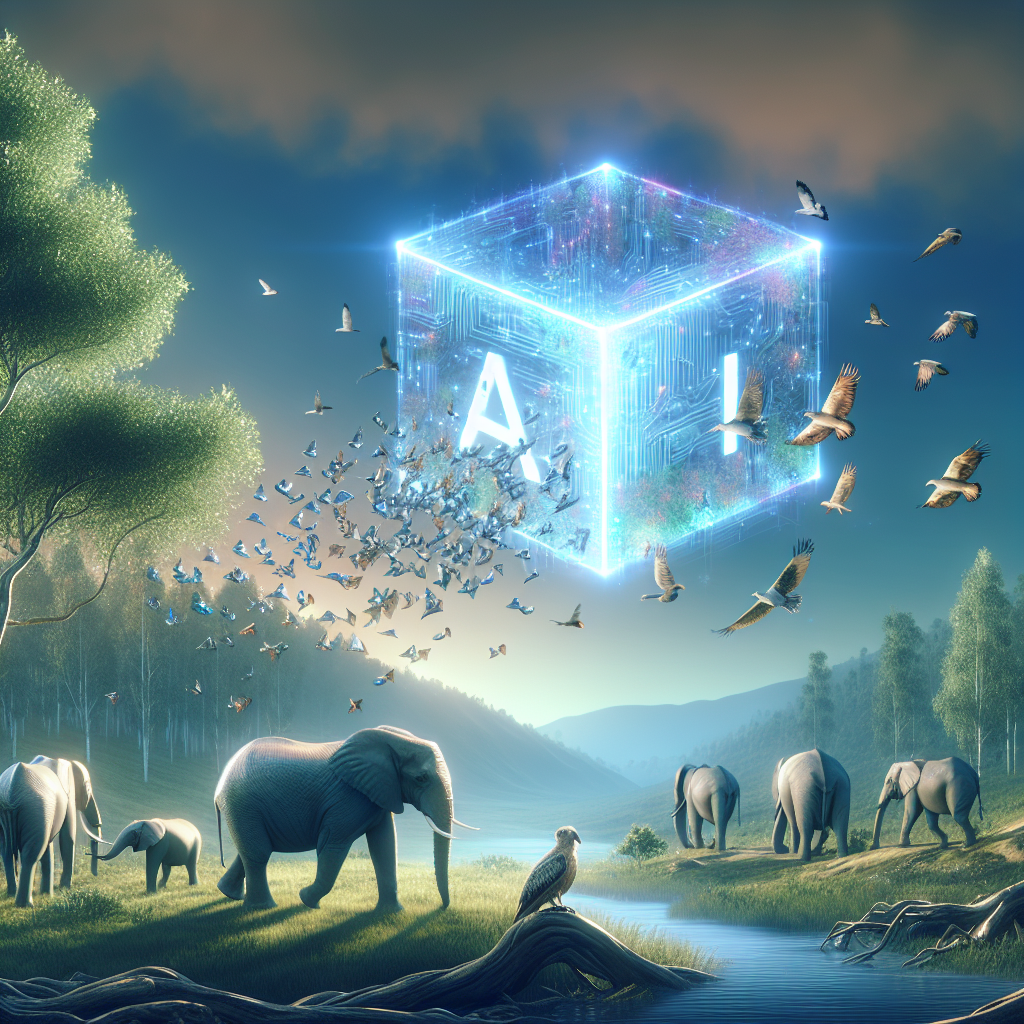The Applications of AI and Machine Learning in Wildlife Conservation
In recent years, the use of artificial intelligence (AI) and machine learning techniques has been revolutionizing various industries, including wildlife conservation. These technologies are enabling researchers and conservationists to better understand and protect endangered species, track wildlife populations, and combat illegal poaching activities. In this article, we will explore the different applications of AI and machine learning in wildlife conservation and discuss how these technologies are helping to safeguard the planet’s biodiversity.
1. Monitoring and Tracking Wildlife Populations
One of the key challenges in wildlife conservation is accurately monitoring and tracking wildlife populations. Traditional methods such as camera traps and radio collars can be time-consuming and labor-intensive. AI and machine learning algorithms are now being used to analyze vast amounts of data collected from these monitoring devices to accurately estimate wildlife populations and track their movements.
For example, researchers at the University of Wyoming have developed a machine learning algorithm that can analyze thousands of camera trap images to accurately identify and count individual animals. This technology allows researchers to monitor wildlife populations more efficiently and make informed conservation decisions.
2. Predicting Animal Behavior
AI and machine learning algorithms can also be used to predict animal behavior based on environmental factors such as temperature, precipitation, and habitat conditions. By analyzing historical data on animal movements and behaviors, researchers can develop models that predict how animals will respond to changes in their environment.
For example, researchers at the University of California, Berkeley have developed a predictive model that uses machine learning to forecast the movements of endangered species such as the California condor. By understanding how these animals respond to changes in their environment, conservationists can better protect them from threats such as habitat loss and climate change.
3. Combatting Illegal Poaching
Illegal poaching is a major threat to wildlife populations around the world. AI and machine learning technologies are being used to combat this illegal activity by analyzing data from satellite images, drones, and camera traps to identify poaching hotspots and track the movements of poachers.
For example, the non-profit organization RESOLVE has developed a system called TrailGuard AI that uses AI algorithms to analyze camera trap images and detect human activity in protected areas. This technology can alert park rangers in real-time when poachers are detected, enabling them to respond quickly and prevent wildlife poaching.
4. Enhancing Conservation Efforts
AI and machine learning can also be used to optimize conservation efforts by identifying the most effective strategies for protecting endangered species and their habitats. By analyzing data on factors such as habitat quality, predator-prey relationships, and human-wildlife conflicts, researchers can develop conservation plans that maximize the impact of their efforts.
For example, researchers at the University of Oxford have used machine learning algorithms to analyze data on African elephants and develop a model that predicts the most effective locations for establishing wildlife corridors to connect fragmented habitats. This technology can help conservationists prioritize their conservation efforts and ensure the long-term survival of endangered species.
5. FAQs
Q: How accurate are AI and machine learning algorithms in monitoring wildlife populations?
A: AI and machine learning algorithms have been shown to be highly accurate in monitoring wildlife populations. These technologies can analyze large amounts of data from monitoring devices such as camera traps and radio collars to provide accurate estimates of wildlife populations and track their movements.
Q: How can AI and machine learning help combat illegal poaching?
A: AI and machine learning technologies can be used to analyze data from satellite images, drones, and camera traps to identify poaching hotspots and track the movements of poachers. By detecting poaching activity in real-time, conservationists can respond quickly and prevent wildlife poaching.
Q: What are some of the challenges in using AI and machine learning in wildlife conservation?
A: Some of the challenges in using AI and machine learning in wildlife conservation include the need for large amounts of high-quality data, the complexity of developing accurate predictive models, and the ethical considerations of using these technologies to monitor and track wildlife populations.
In conclusion, AI and machine learning technologies are playing a critical role in advancing wildlife conservation efforts around the world. By leveraging these technologies to monitor wildlife populations, predict animal behavior, combat illegal poaching, and enhance conservation efforts, researchers and conservationists are able to better protect endangered species and safeguard the planet’s biodiversity. As these technologies continue to evolve, we can expect to see even more innovative applications of AI and machine learning in wildlife conservation in the future.

